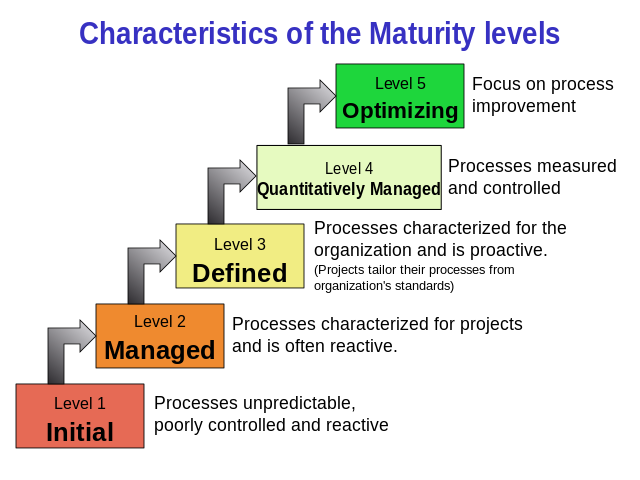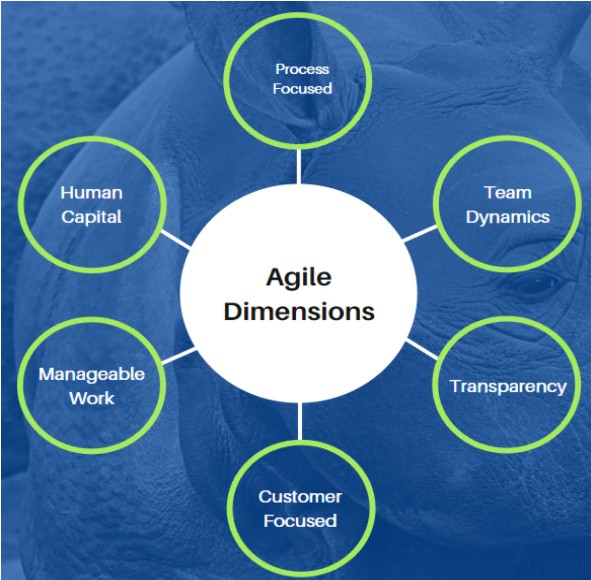

Building an Agile Assessment Tool
source link: https://www.scrumexpert.com/knowledge/building-an-agile-assessment-tool/
Go to the source link to view the article. You can view the picture content, updated content and better typesetting reading experience. If the link is broken, please click the button below to view the snapshot at that time.
Building an Agile Assessment Tool
Conceptually Scrum is simple, so why is achieving a mature agile team such a daunting experience? Maybe because it’s not just a matter of implementing the ceremonies. Scrum teams need to embrace continuous improvements through an incremental and iterative process.
Author: Mark Haynes, https://dmarkhaynesconsulting.godaddysites.com/
You might counter with, that’s what Retrospectives are for but by intent, Retrospectives are designed for short-term changes, occurring for a span of a Sprint or two, not about systemic changes. What if your Scrum team stagnates after a few years and resists further changes? What if the team goes from one flavor of the month to the next, chasing advice like they were butterflies? Perhaps it’s following through with all the behaviors and practices learned over 60-plus years of software development. Addressing these issues is anything but simple, especially with all the contradictory advice from IT experts. Without a philosophy of continuous improvements, simply implementing the ceremonies is a recipe for failure. So how does a team engage in creating systemic changes to their agile approach? As proposed by Dr. Demming, the PDSA Cycle (Plan-Do-Study-Act) is a systematic process for gaining valuable learning and knowledge for the continual improvement of a product, process, or service.
Conducting an Agile Assessment
There has been a lot written about Agile Maturity models. These tend to focus on procedural approaches. Detailed questionnaires specifically target Scrum features, but that will not address many non-Scrum behaviors. Versions of the Capability Maturity Model appeal to traditionalists with structured systems analysis and a rigorous procedural approach. But instead of building a detailed process improvement plan, with a series of Agile Maturity levels, why not embrace the conversational approach?
The conversational approach focuses on the needs of the team, instead of attempting to achieve a scalar ranking. It engages the entire team, scrum master, product owner, and an Agile Coach in a conversation that will:
- Determine if your team is following foundational agile principles,
- Narrow the focus on a few specific items, impacting current needs,
- Prioritize items to be changed,
- Decide how to Implement changes, assess results, and repeat the process.
Sound too easy? Not sure where to start that conversation? You can start by concentrating on one of the Six Dimensions of Agility:
- Process Focused,
- Team Dynamics,
- Transparency,
- Customer Focused,
- Manageable Work, and
- Human Capital.
One: Process Focused
A foundational principle of Scrum is that teams control their underlying processes. The team needs to be able to change its processes within a short interval to react to the current business climate. These are divided into three sub-dimensions:
- Process Controls – such as visual pull-based scheduling systems and feedback loops,
- Iterative & Incremental development – think size and duration of how you deliver working solutions, and
- Ceremonies. Rituals or Events – traditional Scrum plus a few modern extras
Two: Team Dynamics
What factors influence how teams interact with themselves and others? The focus is on Scrum teams and their extended team members, but it applies to any team. Let’s consider several sub-dimensions:
- Cooperative & Collaborative teams – At a minimum teams need to exhibit cooperative behaviors, but it goes much deeper than that, they must also embrace the spirit that a team is greater than the sum of its parts. They must also develop a collaborative spirit.
- Independent & Small teams – This seems fairly obvious. Scrum is all about small, and independent teams. This is typically subject to various organizational issues and restrictions which tend to make them grow to an unwieldy size. That’s what needs to be discussed.
- Safe Environment – To leverage the team’s potential, everyone needs to contribute their ideas, especially if they aren’t popular. It’s not about building a safe zone. Groupthink will do that. It’s about empowering the potential of individual team members.
- Self-organizing teams – Teams should be permitted to decide on how best they can perform their mission. It’s not about abrogating leadership. It’s about giving the team a voice in what makes them successful.
Three: Transparency
With a focus on self-managing teams, transparency becomes a vital aspect beyond any reporting requirements imposed by managerial fiat. We will discuss several aspects:
- Explicit Policies – The team needs to state unequivocally, what their internal working policies are and display them visually.
- Project Tracking & Oversight – The judicious use of metrics, dashboards, and milestones can greatly enhance the external confidence in the team and greatly reduce otherwise burdensome reporting responsibilities. Of course, the overuse of metrics can have the opposite effect.
- Communication – A catch-all, which encompasses other ways the team communicates with itself and other
Four: Customer Focused
The team must be able to swap internal locus of control based on satisfying management and the team’s agenda, to an external locus that explores external influences affecting how they satisfy their mission and can best satisfy their customer needs. We will discuss several aspects:
- Continuous Improvement – Embrace a philosophy of incremental and continuous improvements. More than just a Retrospective at the end of the Sprint. This should embrace the concepts of Demmings Process Improvement Cycle.
- Quality Focused – The three-legged stool of Project Management is Budget, Schedule, and Quality. Quality often gets the short shift. Agile views these somewhat differently, but is quality still just an afterthought or just another task in your User Story?
- Value Added – These are the special features or improvements added to a product or service to increase its desirability and monetary value to customers. Does the benefit to the consumer outweigh the effort to add the feature?
Five: Manageable Work
A primary focus for the team must be on performing useful work, valued by the stakeholders. Useful work is more than a wish list from the users. It’s also implementing those changes that make the entire product delivery process more efficient.
- Value-Based Work – One characteristic of highly functioning teams is a clear and aligned purpose. The team understands the objective of the sprint and how it benefits the users.
- Minimalism – The principle of Minimization is that a simple and elegant solution is better than complexity without adding value. It favors small work packages as more efficient and time-boxed meetings as more productive. It isn’t simply “less is better than more”.
- Managed Backlogs – Both the Sprint and Product backlog need to be managed. The Sprint backlog needs to be differentiated from the Product backlog. User Stories in the Product backlog need to be organized, archived, and enhanced. Eventually promoted into the Sprint backlog.
Six: Human Capital
To leverage the team’s potential, everyone needs to contribute. It’s not about building a safe zone. Groupthink will do that. It’s about empowering the potential of individual team members. If teams wish to mature, they can’t ignore the personal growth of their constituents. We will discuss several aspects:
- Building Communities – Does your Scrum team exist as an island in the storm or does your organization help create support structures, which help build an agile community.
- Professional Development –Does your team and organization encourage and sponsor an individual’s professional growth. This is more than enhancing the productivity of the team. It’s about supporting an environment of continuous learning and personal growth.
- Something else – Job satisfaction and lack of opportunities are primary motivations for employees to jump ship. A manager’s truism is that there is always something else to do. If you have satisfied 100% of your maturity goals, then consider what else you can work on.
Conclusion
Remember, your conversation with the team is your assessment. It’s time to embrace the Agile Way. You will need it to continue your agile journey, and the time to start is right here and right now.
About the Author
Mark Haynes is a renaissance man trapped in a specialist’s body. Lately, he has been working as a Scrum Master and Agile Coach. Agile is a philosophy, not a methodology. In interviews, people often ask him how long you have been agile? His answer is “Always. I just didn’t know what it was called before.”
Recommend
About Joyk
Aggregate valuable and interesting links.
Joyk means Joy of geeK

